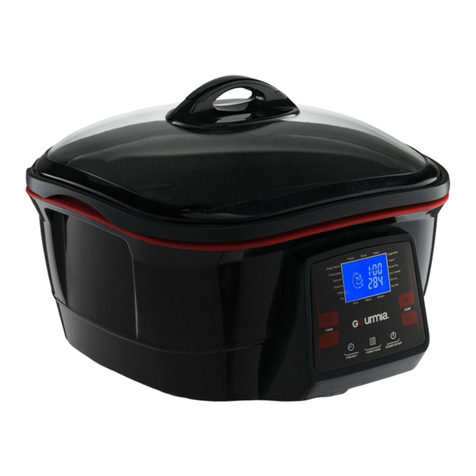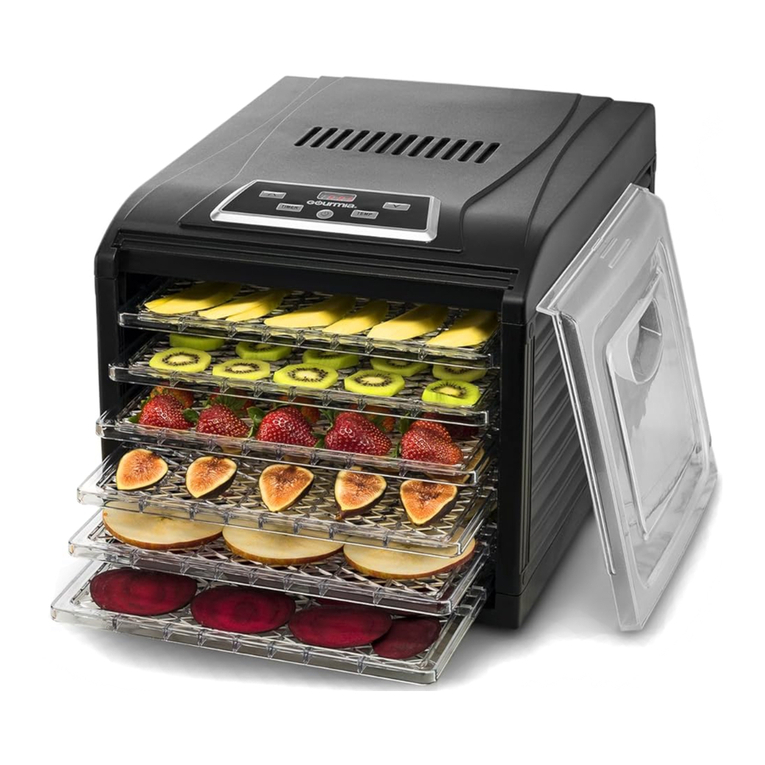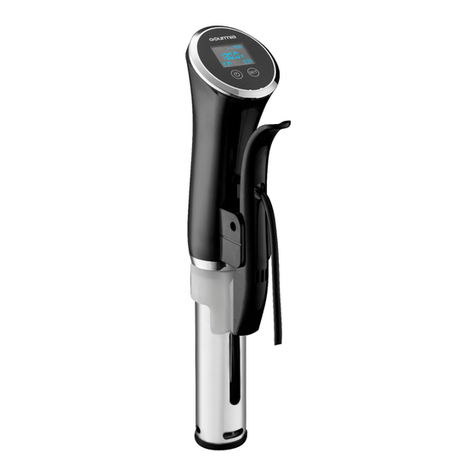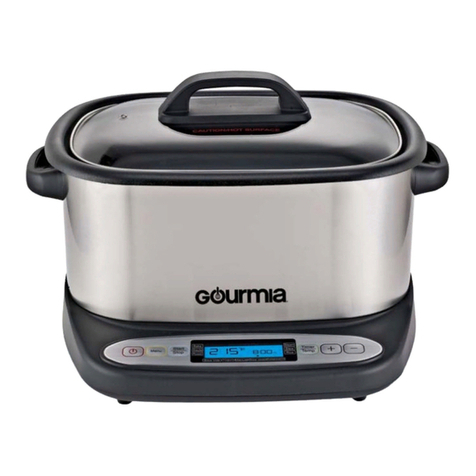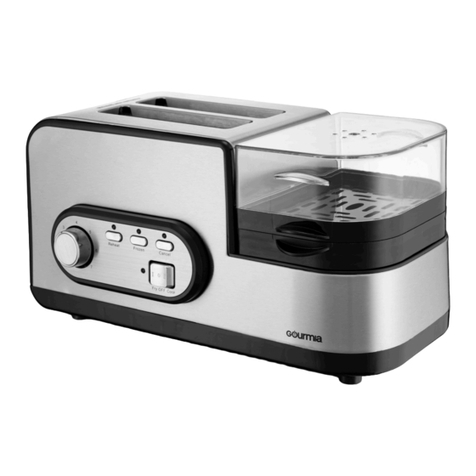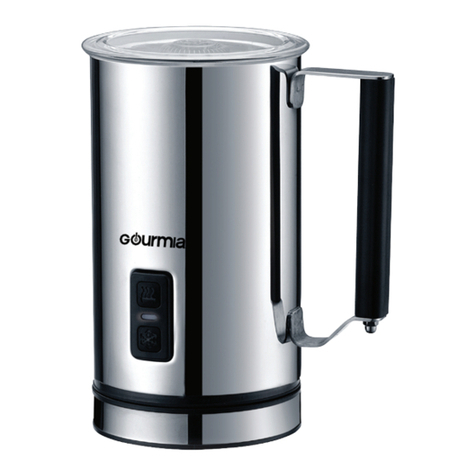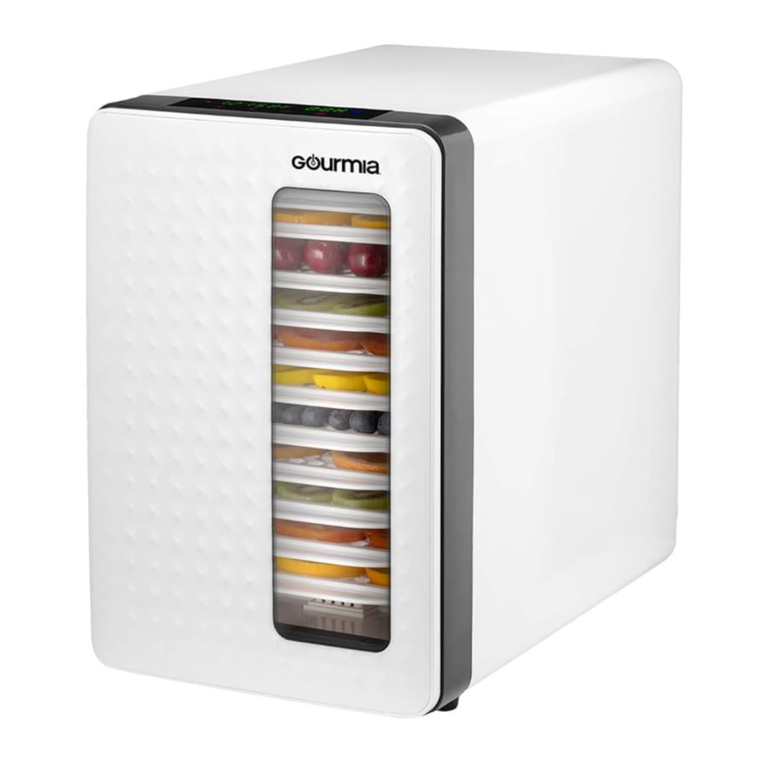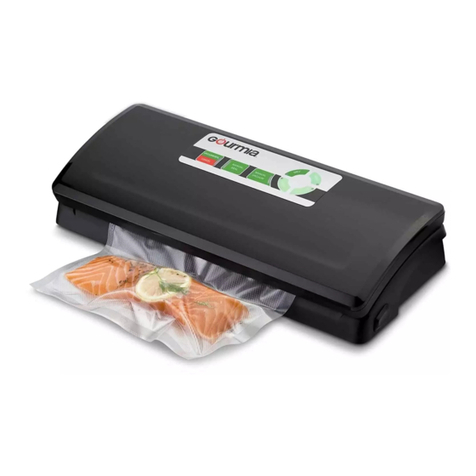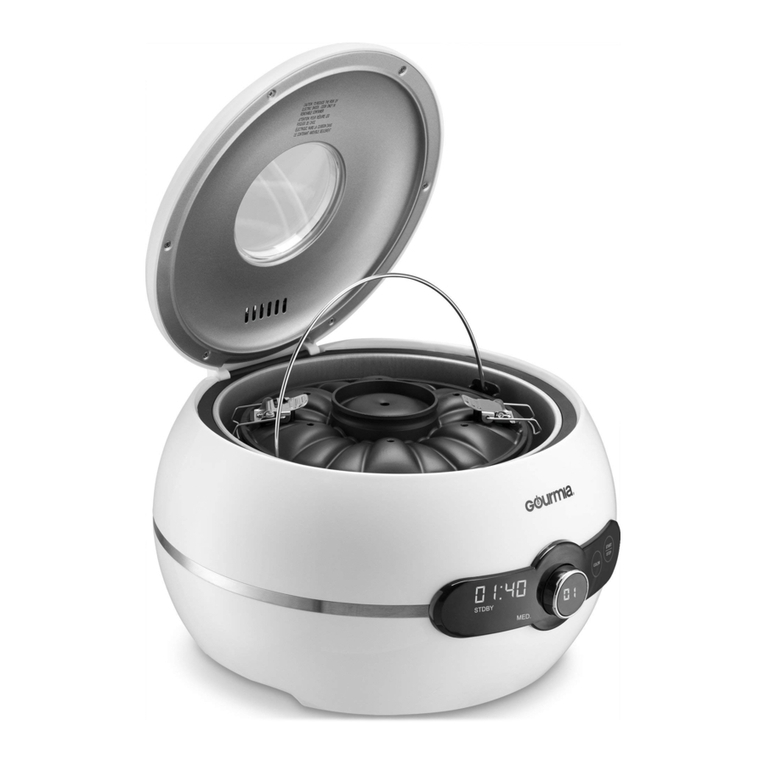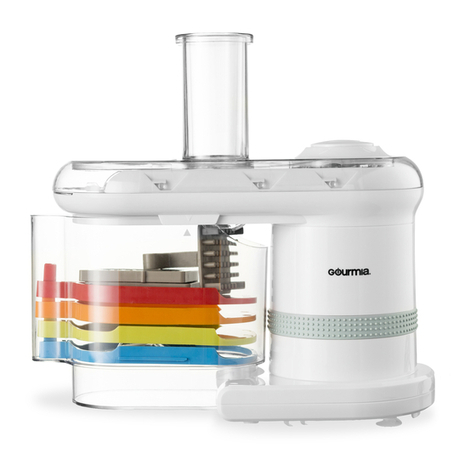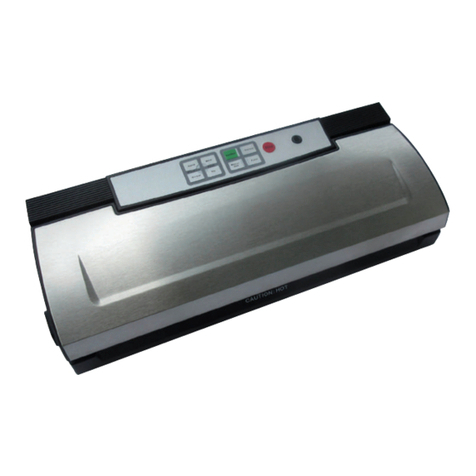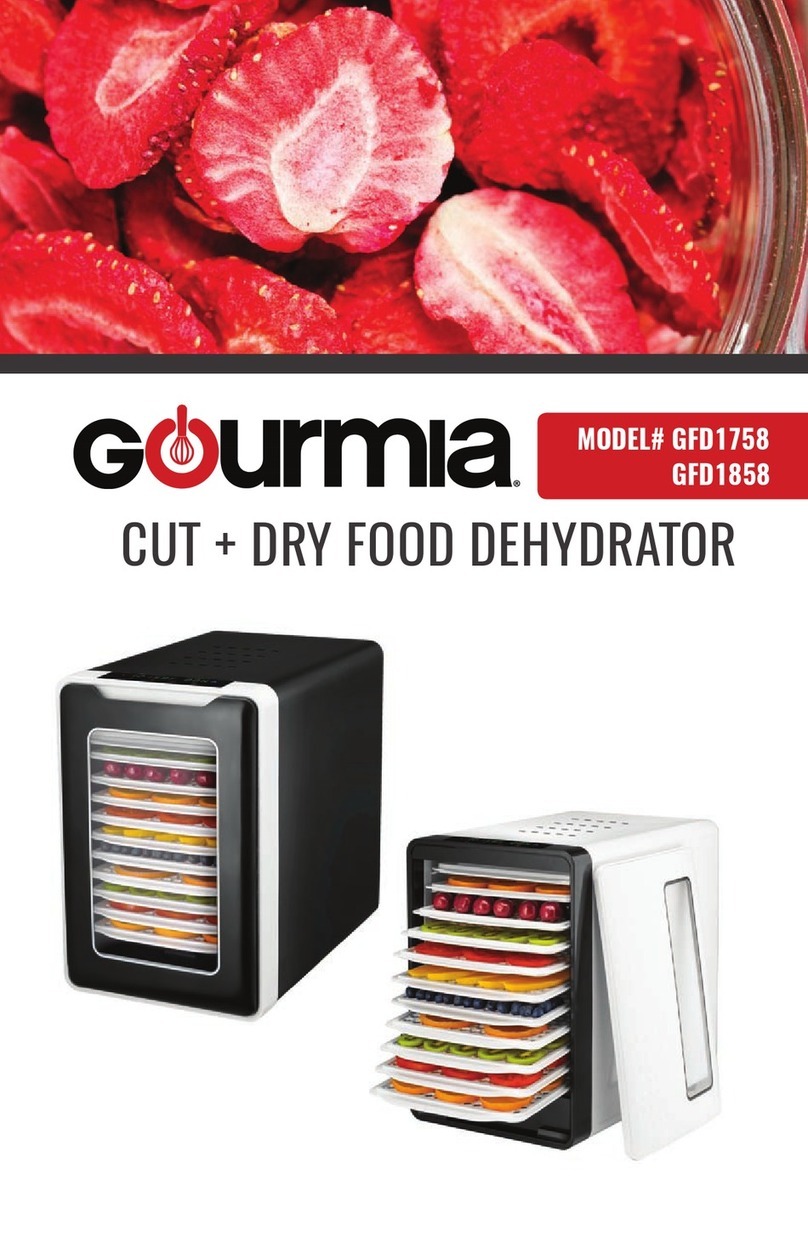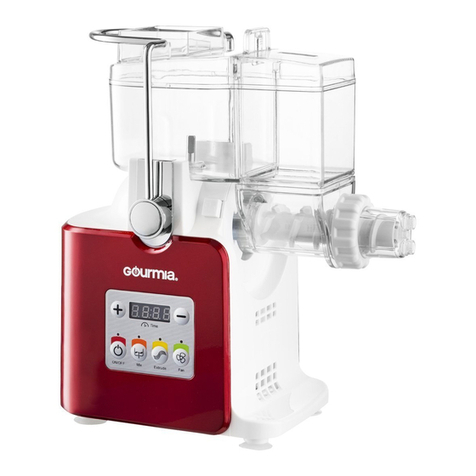
76
SAFETY INFORMATION
SAFETY INFORMATION
IMPORTANT SAFEGUARDS
When operating this electric appliance, basic safety instructions should always be
followed. Refer to the following for these instructions.
1. READ ALL SAFETY & USAGE INSTRUCTIONS BEFORE USING
DEHYDRATOR.
2. EXERCISE CAUTION: Do not touch hot surfaces or trays while dehydrating.
Burns may occur.
3. AVOID ELECTRICAL SHOCK. Do not immerse cord, plug or the Dehydrator
Base in water or other liquid.
4. Use pot holders, if needed, when handling the Drying Trays or EasyVue Lid.
5. UNPLUG Dehydrator from outlet when not in use or before cleaning.
DO NOT add or remove parts or accessories while hot. Do not let cord hang
over edge of table or counter or touch hot surfaces.
6. Children should not use Dehydrator unsupervised; close supervision is
required when appliance is used near or with children.
7. Never touch, cover or obstruct the Top Air Vent or Bottom Air Intake during
or after operation. Hot air may cause burns. Keep children away from Vent
and Intake.
8. Operate the Dehydrator on a level surface well away from any hot gas or
electrical burner, heat source, combustible spray cans or pressurized items.
9. DO NOToperate the Dehydrator outdoors.
10. Never operate the Dehydrator with a damaged cord or plug or one that has
malfunctioned or been damaged in any way. Immediately contact Customer
Service for analysis.
11. DO NOT add unauthorized accessory attachments. Such use may result in
electric shock, injury or fire.
12. Use only factory cord supplied; NEVER add extension cords. When done
using, switch control to OFF then pull plug from outlet.
13. DO NOT operate the Dehydrator when empty
14. Do not use the Dehydrator for any use other than intended. Do not use on
or near a stovetop or other heat source.
FOR HOUSEHOLD USE ONLY
Electrical Polarized Plug: This Dehydrator
has a polarized plug (one blade is wider than
the other). To reduce the risk of electrical
shock, the plug is intended to be used by
inserting it into the electrical outlet only one
way. If the plug does not t securely into the
outlet, turn the plug and re-insert. Do not
modify this plug. If the plug does not t the
outlet securely, call a qualied electrician
for assistance. DO NOT use this plug with
extension cords of any kind.
SAVE THESE INSTRUCTIONS
